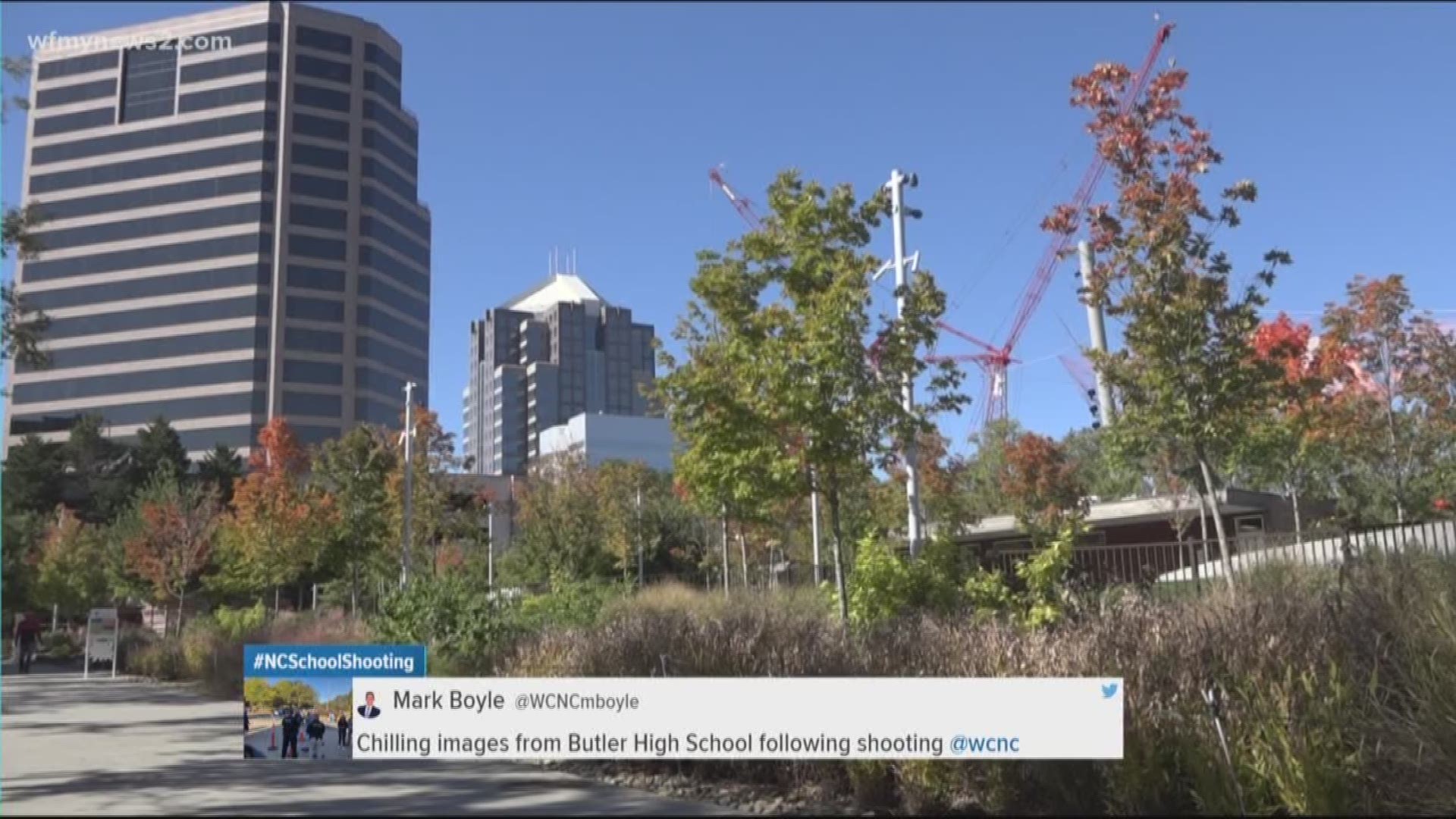GREENSBORO, N.C. -- The message from the Department of Homeland Security is: Run, Hide, Fight.
Those are the steps you should take to get yourself away from an active shooter, with running being your first option and fighting being the last resort.
But an expert who talked to WFMY News 2 explained preparedness is more complex than remembering those three words.
Marko Galbreath with T4Tactics spent decades working in law enforcement before retiring and dedicating his time to active shooter training. He says the demand for it is always increasing.
"I just got back from Chicago 2 days ago," he says. "I fly out to Dallas next week and I come back and go to Minneapolis. So it is steady, but to answer your question, I'm really busy now after the Pittsburgh incident."
Galbreath travels around the country teaching training techniques to schools, businesses, places of worship, really anywhere that could be threatened. He's based out of Lynchburg, V.A. but says he's done a lot of work in North Carolina.
In an active shooter event, all rhyme and reason go out the window.
"When you hear those shots you're going to go from a resting heartbeat of 75-80 beats per minute and you're going to shoot all the way up to 180," he explains.
Galbreath says he wants people to get to a point where they're able to push past the panic and something like that takes practice. In his training sessions, they go over breathing techniques and mental techniques to help bring your wits back so you can move away and protect yourself from the threat.
"It's not living in paranoia. It's not living in fear. We are having attacks in this country and we've got to step up to the plate and realize that it's a reality and it's just something that's occurring and we've got to get in our head. If this happens, I'm doing this and if that doesn't work I'm going to do this. Always one step ahead of the bad guy."
Galbreath says he'll look at buildings and their surroundings before doing a training session. Knowing the layout is key when trying to come up with an escape route in the event of an active shooter. For example, he recommends school districts tailor their training drills to each and every building.
"Active shooter training should never be one size fits all. It should never be a glove. It should be custom tailored to that specific facility, what type of work they do and what their threat level is."
It might seem like an instinct, but one thing Galbreath cautions about using is your phone in an active shooter situation.
"You have to put the phone down unless it's to call 911 or unless you're making a phone call that's critical to stopping the attacker or saving your life."
He says texting or posting to social media can distract you from getting away. It can also cause the phone to make noise or alert a shooter to where you might be hiding.
"That person has trained for weeks, months or a year to come in to that facility and kill people. We have to understand that and if I'm busy on my phone, I'm not staying one step ahead of the ball game."
I asked Galbreath how he approaches this subject with students. He says he doesn't want to scare them, but it's important he doesn't sugarcoat things.
"They have to understand exactly what it is. There is somebody that is planning to come into this school and do great harm to you 12:10 it's not playtime, it's not recess."
He says he explains to students that it might be okay to go into a bathroom or an office that they normally wouldn't be allowed to go into as a place to hide and protect themselves if their life depended on it.
"When an active shooter is coming down the hallway, you go in to any room you can and you lock the door. The rule book is out. You're in survival mode."
Another good way to prepare for a scenario like this is to make it good practice to be aware of your surroundings. Galbreath says pay attention to your place of work, where you shop or even go out to eat. Know the exits, know where to hide. Have a plan already thought out.

